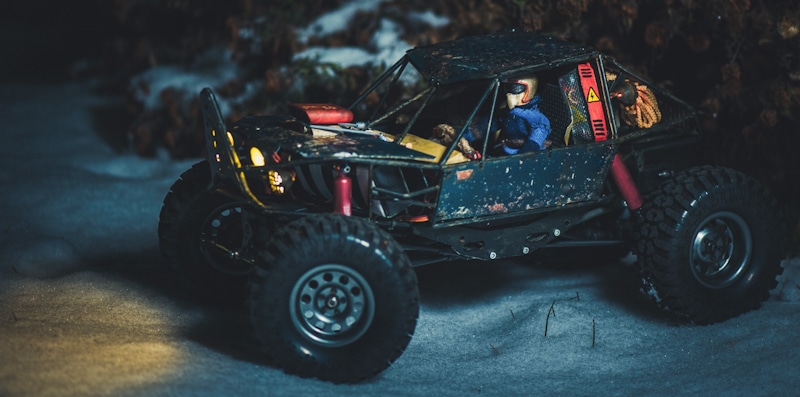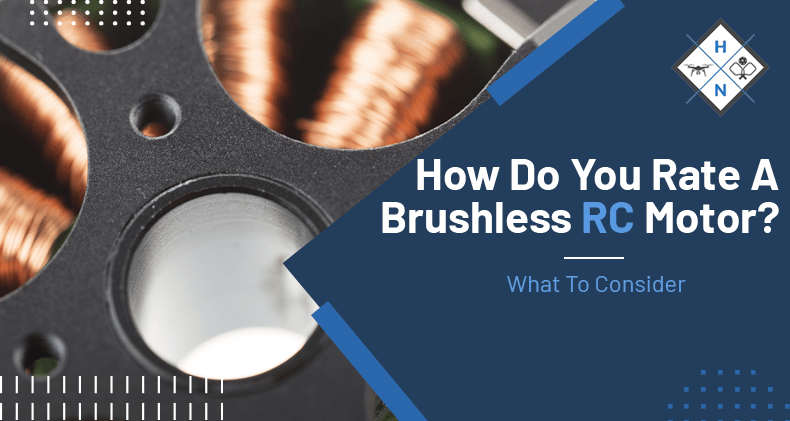RC cars require a motor to properly function; these motors come in two types, brushed and brushless. A brushless motor is the most popular and preferred choice and has many improved features. Rating a brushless RC motor can be difficult if you do not know what to consider and look out for.
You rate a brushless RC motor by looking at the size of the motor and speed or velocity in kV. Some things to consider when rating a brushless RC motor are the current, voltage, and torque. You should look out for these factors when purchasing a good brushless RC motor.
Before a brushless motor can be considered to be good, it must meet some specifications. However, if you are not aware of these specifications, it will be impossible to identify a good brushless motor.
What To Consider When Rating A Brushless RC Motor?
Brushless motors are the most popular motor for an RC car. It has increased speed, works efficiently, generates more power, makes less noise, and requires less maintenance. There are some factors you have to consider when rating a brushless RC motor.
Size Of The Motor
The size of the motor is very important when rating a brushless RC motor. Most manufacturers use a naming scheme consisting of a 4-digit number to determine the size of the motor. So, after the name of the brushless motor comes a 4-digit number.
The first two numbers stand for the diameter of the stator, which is in millimeters, while the last two digits are the height which is also measured in millimeters. So, if a motor is named 2303, the diameter of the stator is 23 mm while the height is 3 mm.

Speed Of The Motor
The speed of a brushless RC motor determines how fast your RC vehicle will go. A brushless motor's speed is rated in kV, which is equivalent to the RPMs per volt. The revolutions per minute refer to how many times the motor will turn per volt.
The kV of a brushless motor is usually written on the motor. However, the number of RPM supplied depends on the amount of voltage used. So, if a brushless motor of 1200 kV uses a 1-volt power supply, it will generate 1200 revolutions per minute. However, if it uses a 10-volt power supply, it will generate 12000 revolutions per minute.
The Current Produced By The Motor
Current is like the power supply of the brushless RC motor. Too much current can damage an RC motor. So, when rating a brushless RC motor, you must make sure it does not produce too much current. There is an operating and stall current in RC motors.
The stall current applies enough torque for the brushless motor to run at zero revolutions per minute or stall speed. Operating current refers to the average amount of current that the motor is expected to draw under a normal torque.
Torque
The torque of a brushless RC motor refers to how much rotational force can be applied to the vehicle. It is determined by the number of winds on the armature and the strength of the magnets. The higher the torque, the faster the RC car. When rating a brushless RC motor, it must have a high torque.
Voltage
The voltage of a brushless RC car is used to overcome the back current and keep the net current flowing in one direction. The higher the voltage is, the higher the torque. When rating a brushless RC motor, you should look out for the highest voltage; the higher it is, the better the motor.
How Does RC Rating Work?
RC vehicles are becoming very popular and widely used. While your interest may be in operating your RC car when you want to, regular maintenance, and replacement, you also need to understand how an RC car is rated.
One of the main points of rating an RC vehicle is the speed of the vehicle. The lowest speed of an RC vehicle is 5 mph, while the highest is about 100 mph. The higher the speed of the RC vehicle, the better it is. Another point of rating is the type of motor the vehicle is using.
A brushless motor is better than a brushed motor in an RC vehicle. A brushed motor will wear out faster and easier than a brushless motor which makes them less suitable. When rating an RC, you should make sure it is using a brushless motor. Next in the RC rating system is the manufacturing company.
Not all manufacturers produce good RC vehicles; some of the best manufacturers are Traxxas, HPI Racing, ARRMA, Axial, Redcat Racing, and Kyosho. Always remember that when rating an RC vehicle, the manufacturer is a very important factor to consider.
What Do The Numbers On Brushless Motors Mean?
Brushless motors usually have their speed rating and size on their body. The numbers on brushless motors are their kV rating and physical size. For example, you can have a brushless motor with the numbers 5055-3000 kV on it. This implies that the first set of numbers is the physical size while the other is the speed rating.
So, the first set of numbers which is 5055, will be divided into two; the first two will be 50, and the second two will be 55. The first two numbers refer to the diameter of the brushless motor, which is in millimeters, so in this case, 50 mm.
The second two numbers refer to the length of the brushless motor housing, which is also in millimeters, in this case, will be 55 mm. Then, the second set of numbers will be the motor's kV rating. So, in this case, it will be 3000 kV.
The kV rating refers to the motor's revolution per minute (RPM) per volt with no load. For example, a brushless motor with a 3000 kV powered by a 12 V power source will generate 36,000 revolutions per minute. The maximum revolution per minute a brushless motor can meet under no load is 36,000.

Is Higher Or Lower kV Rating Better?
kV refers to the constant velocity of a motor and is measured by the number of revolutions per minute that a motor turns with no load applied when one volt is applied. In the case of RC car racing, a higher kV is much better than a lower kV. This is because the higher the kV, the faster the RC car will move.
So, we cannot say for sure which is better, a higher or lower kV. This rating depends on how and what you want to use your RC car for. If you are running your RC car for recreational purposes, a lower kV rating might be good for you as it will cause your vehicle to be slow.
A lower kV rating will be the best for beginner RC car drivers as it will give them time to adjust while operating an RC car. Hence, there is no possibility of losing control of the car due to high speed. Experienced drivers, on the other hand, will most likely prefer a higher kV rating as they are free to run the RC car as fast as they want.
Final Thoughts
It is vital to know everything about all the parts of your RC car, the same way you know most of the parts of your vehicle. This knowledge will come in handy when you need to make some replacements or upgrades.
It would not be cool to have an RC car with parts to be replaced, and you have no clue about them. You would end up wasting money and might not get a quality part. As long as you own an RC car, it would help if you learned about it.
Shawn Manaher loves to play with new toys and dive into new hobbies. As a serial entrepreneur, work definitely comes first but there is always room for hobbies.

